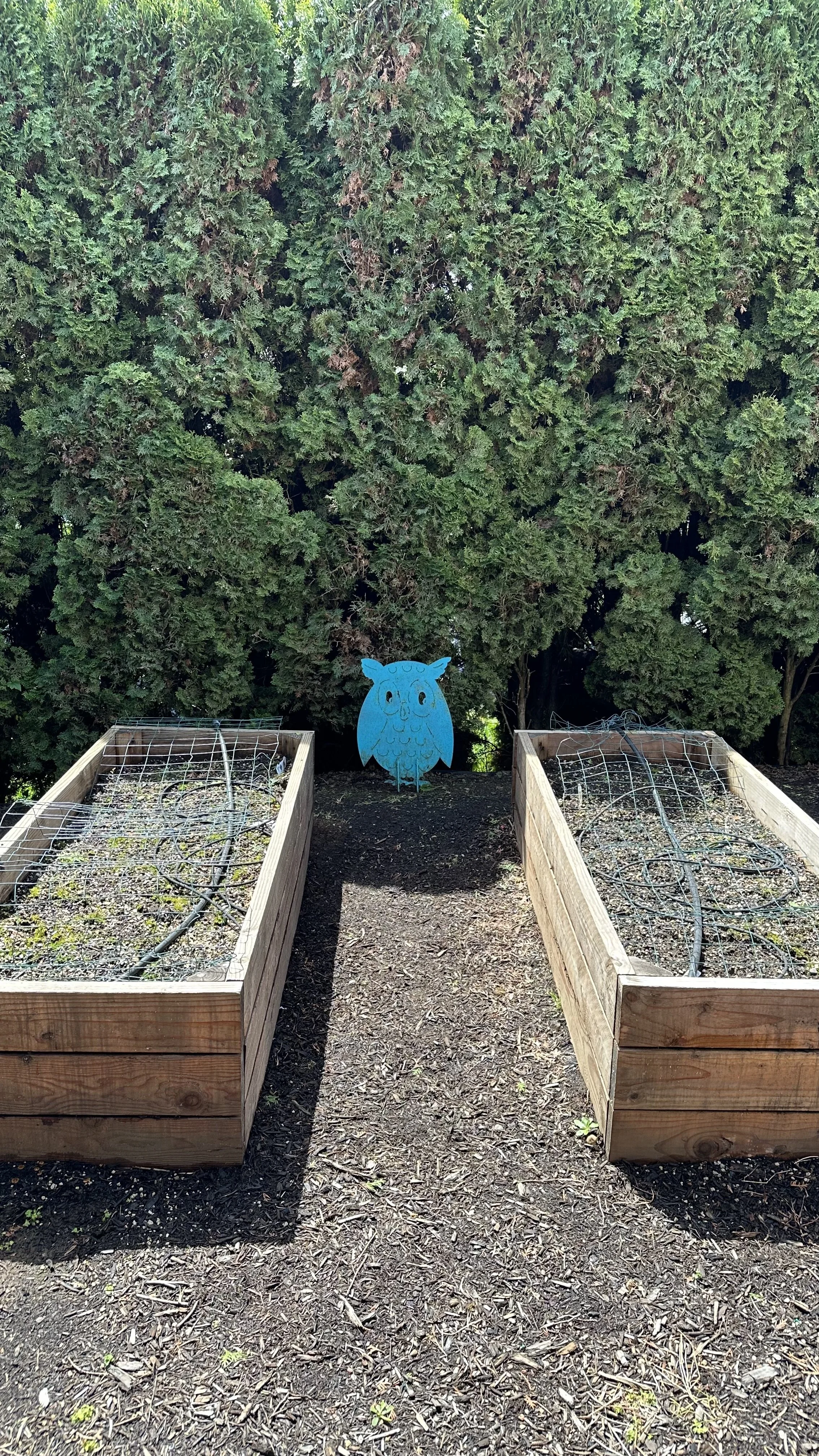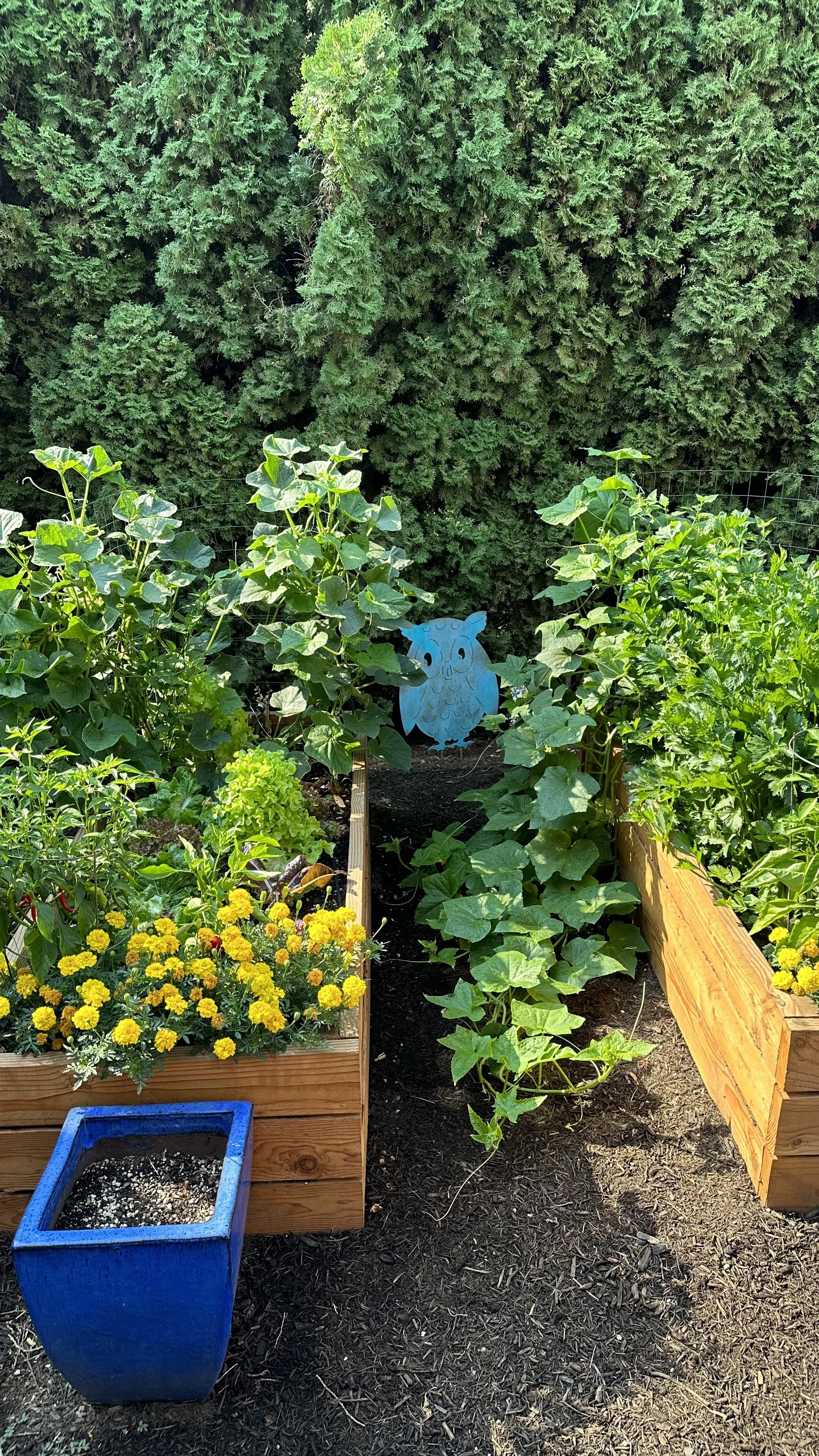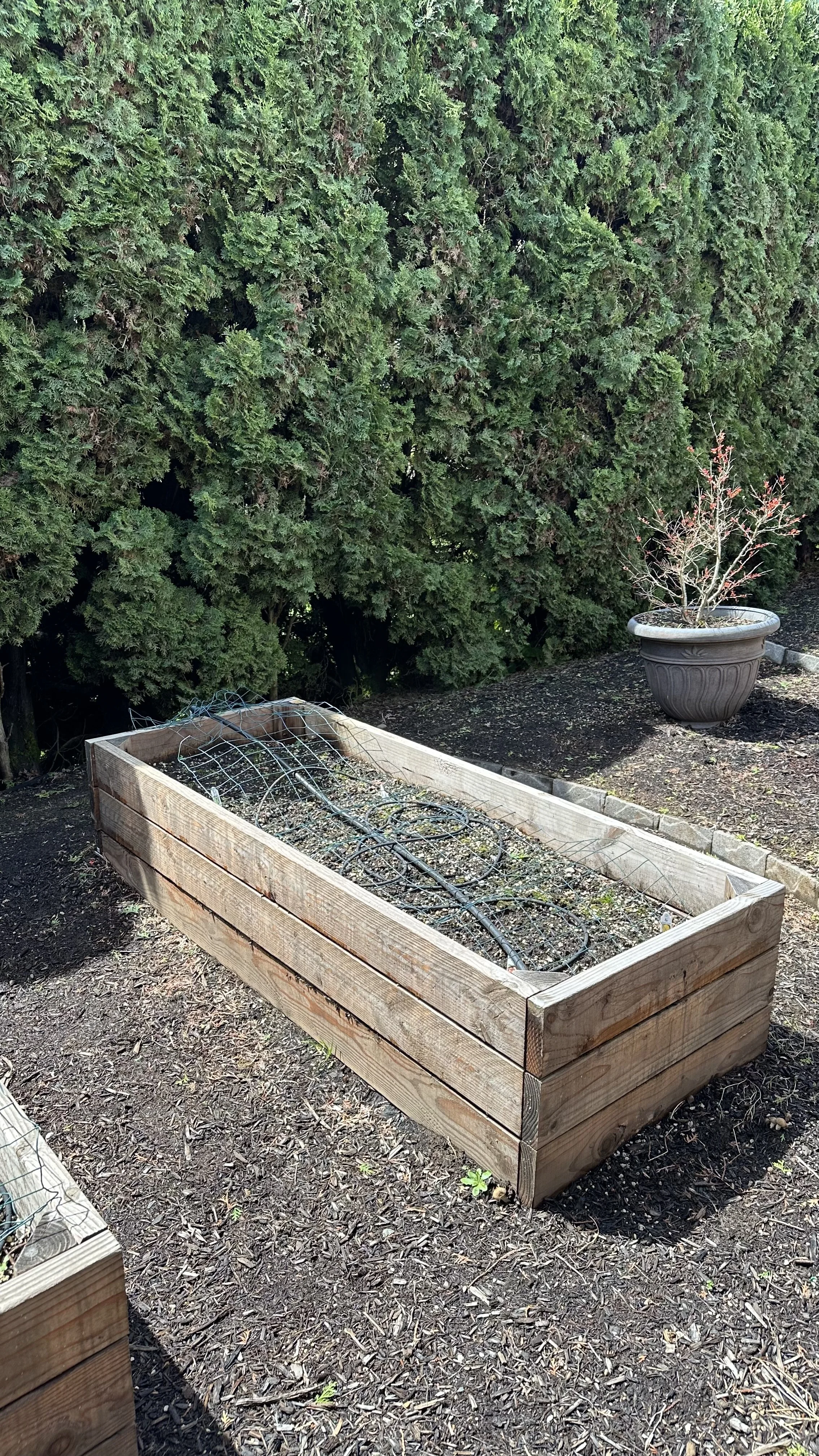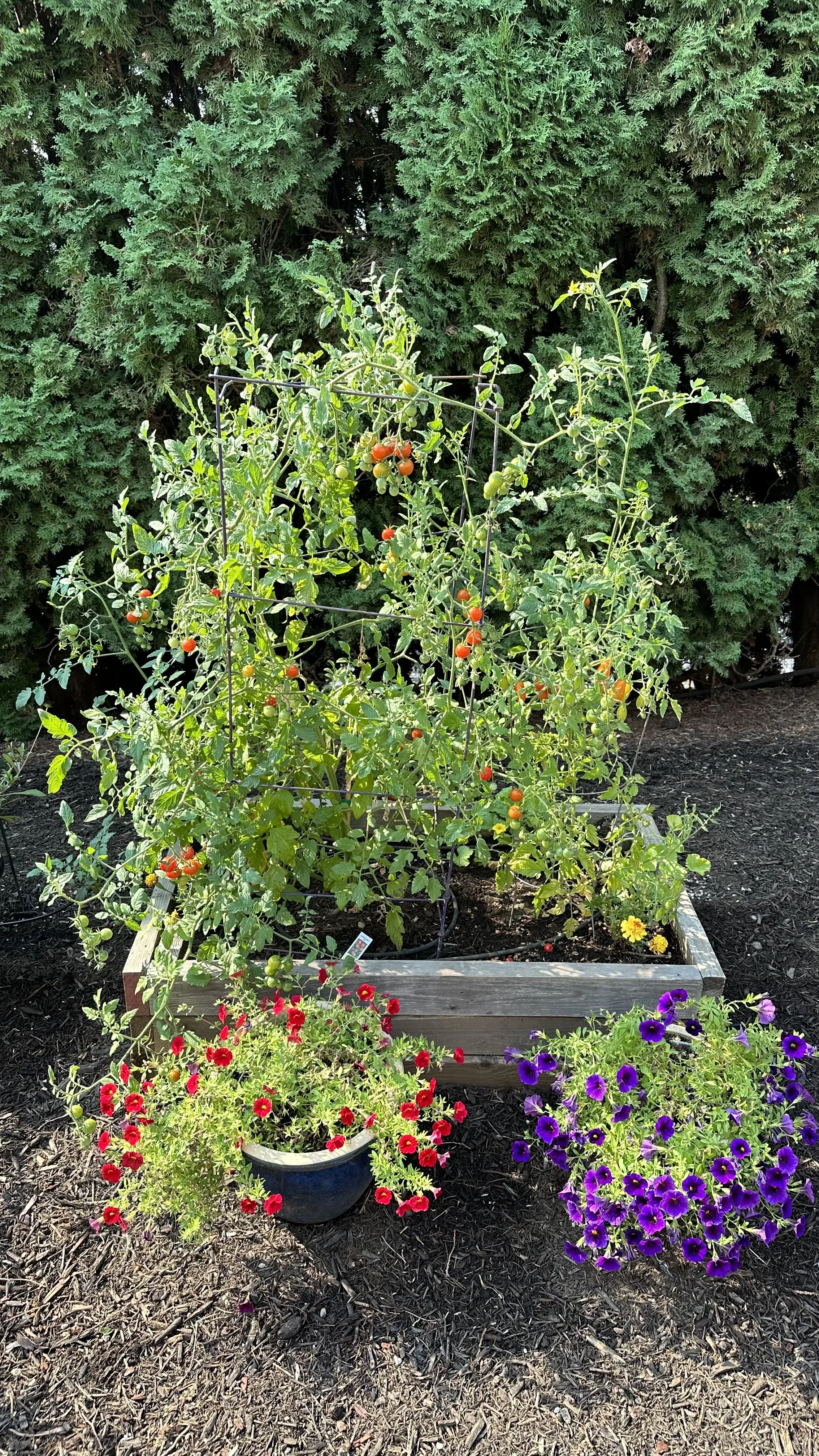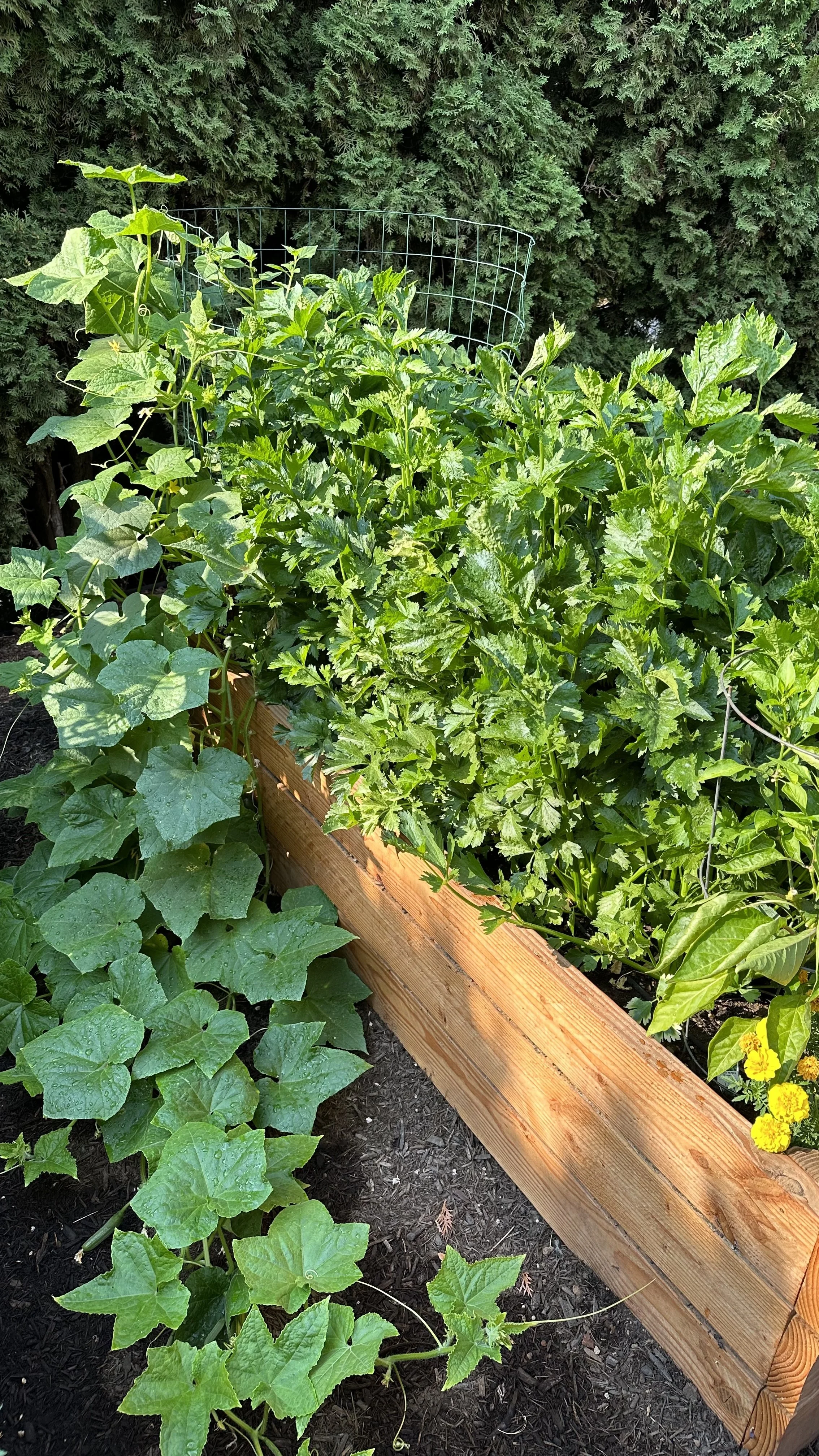What to Put on the Bottom of a Raised Garden Bed
This website is reader-supported - thank you! This post may contain affiliate links. As an Amazon Associate, I earn from qualifying purchases at no extra cost to you.
Embarking on a journey with raised garden beds opens up a realm of possibilities for all types of gardeners.
These beds are more than just a planting method; they are a transformative approach to gardening, offering enhanced soil control, improved drainage, and easier accessibility.
Ideal for growing everything from lush flowers and fresh vegetables to aromatic herbs, raised beds are a versatile and effective solution for various gardening challenges.
In this comprehensive guide, we delve into the essential elements of raised garden beds.
We'll cover everything from determining the best materials for the bottom layer, to thoughtful design considerations, practical building steps, and effective maintenance strategies.
Raised garden beds merge functionality with charm, making them a key feature in modern gardening.
Through this post, you'll gain a deep understanding of how to create and sustain a raised garden bed that is not only visually appealing but also highly productive.
Whether you are constructing your first garden bed or enhancing an existing one, this guide offers invaluable insights for gardeners at all levels of experience.
To learn more about raised bed gardening, check out my guides:
The Best Vegetables to Grow in a Raised Bed from Seed
Best Options for Bottom Layer of Raised Garden Beds
When setting up a raised garden bed, the material you choose for the bottom layer can greatly influence the effectiveness and longevity of your garden.
Here are the best options, each with its unique benefits:
Stainless Steel Gopher Mesh and Hardware Cloth:
These materials are ideal for protecting your garden from burrowing pests like gophers and moles.
Stainless steel gopher mesh is durable and rust-resistant, making it a long-term solution.
Hardware cloth, with its fine mesh, not only keeps out pests but also provides excellent drainage.
Here is the one I recommend:
Landscape Fabric:
This is a popular choice for gardeners looking to balance weed control with good drainage.
Landscape fabric is permeable, allowing water and nutrients to seep through while preventing weeds from infiltrating the bed.
It's also a great way to keep the soil from escaping, especially if you're placing your raised bed over a grassy or weedy area.
Here is the one I recommend:
Burlap Sack:
For those seeking an eco-friendly and biodegradable option, burlap sacks are a great choice.
They allow for adequate drainage and air flow, which are essential for healthy plant roots.
Over time, burlap decomposes, adding organic material to the soil.
Here is the one I recommend:
Cardboard and Wood Chips:
Layering cardboard at the bottom of your raised bed is an effective, cost-efficient way to suppress weeds.
It eventually breaks down, enriching the soil with carbon.
Wood chips can be added on top of the cardboard as an additional layer for weed control and moisture retention.
Here are the wood chips I recommend:
Specific Scenarios:
Raised Bed on Legs:
In raised beds with legs, lightweight materials like landscape fabric or fine mesh are preferable to support water drainage and aeration.
Here is my favorite raised bed on legs that I use:
Raised Bed on Concrete:
When setting up a garden bed on a hard surface like concrete, drainage becomes crucial.
A combination of landscape fabric and a layer of gravel can facilitate proper water flow.
Layering for Optimal Growth:
For the best results, consider layering these materials.
Start with a more durable, pest-deterring layer at the very bottom (like stainless steel mesh), followed by a weed-suppressing layer (such as landscape fabric or cardboard), and then fill the bed with your soil and compost mix.
Each of these materials offers unique benefits and can be chosen based on specific needs, such as the local pest population, the type of plants you're growing, and the location of your raised bed.
By selecting the appropriate material for the bottom of your raised garden bed, you can create a more productive and low-maintenance garden.
Why the Bottom Matters in Raised Garden Beds
The foundation of a raised garden bed is not just a barrier between the soil and the ground beneath; it plays several crucial roles in the health and efficiency of your garden:
Optimal Drainage:
The bottom layer is key in controlling the drainage of your garden bed.
Proper drainage is essential for plant health, as it prevents waterlogging, which can lead to root rot and other diseases.
Materials like hardware cloth or landscape fabric allow excess water to drain away while keeping the soil in place.
Pest Deterrence:
A significant benefit of raised garden beds is their ability to deter pests.
A well-chosen bottom layer, such as stainless steel gopher mesh, can prevent burrowing animals like gophers and moles from accessing your plants.
This protective layer is particularly important in areas where these pests are prevalent.
Weed Suppression:
Weeds can be a persistent problem in any garden.
A barrier at the bottom of your raised bed, such as landscape fabric or cardboard, can help prevent weeds from growing up into the bed from the underlying soil.
This layer acts as a physical block, stopping weed roots before they can reach the nutrient-rich soil of your garden.
Soil Containment:
The bottom of a raised bed also plays a role in soil containment.
Without a proper bottom layer, the soil can erode or wash away over time, especially in areas with heavy rainfall or on sloped terrain.
A sturdy bottom layer helps to keep the soil within the confines of the bed, maintaining the integrity of your garden structure.
Root Health and Air Circulation:
Roots need room to grow and access to air.
Certain materials at the bottom of a raised bed, like a porous landscape fabric or burlap, can facilitate better air circulation.
This not only helps roots to breathe but also contributes to overall soil health, encouraging beneficial microbial activity.
Long-Term Sustainability:
The right bottom layer can extend the life of your raised bed.
For example, placing a hardware cloth can protect the wooden sides from moisture and pests, thereby prolonging the bed's durability.
The bottom of a raised garden bed is not just a foundational element; it's a critical component that influences drainage, pest control, weed suppression, and the overall longevity of the garden.
By carefully selecting the appropriate material for the bottom layer, gardeners can significantly enhance the success and sustainability of their raised beds.
Raised Garden Bed Design Considerations
Designing a raised garden bed involves more than just choosing the right materials for construction; it's about integrating the bed into the overall landscape of your garden and ensuring it meets your gardening needs.
Here are some key aspects to consider:
Integration with Landscape Design:
Aesthetics:
Consider how your raised bed will fit into the existing landscape.
The style, height, and materials should complement your garden's overall design.
Accessibility:
Ensure that the beds are easily accessible for planting, watering, and maintenance.
Paths between beds should be wide enough for comfortable movement.
Sunlight and Shade:
Position your beds in areas where they will receive the appropriate amount of sunlight for the plants you intend to grow.
Consider the movement of the sun throughout the seasons.
A south-facing garden position is best for most plants.
Incorporating an Irrigation System:
Efficiency:
An effective irrigation system can save time and water.
Drip irrigation or soaker hoses are popular choices for raised beds, providing water directly to the plant roots and minimizing evaporation.
Automation:
Consider installing timers or automated systems for consistent watering, especially if you travel frequently or have a busy schedule.
Weed and Pest Control Strategies:
Barrier Materials:
As mentioned earlier, using landscape fabric or hardware cloth at the bottom can help control weeds and pests.
Additionally, consider natural pest deterrents like marigolds or garlic plants around the perimeter.
Mulching:
Applying a layer of mulch on top of the soil can further suppress weeds and retain moisture in the bed.
Check out my guide: The Best Alternatives to Traditional Mulch for Your Garden.
Material Selection for Durability and Safety:
Safe Materials:
Choose materials that are safe for growing edible plants.
Avoid treated woods that can leach harmful chemicals into the soil.
Untreated cedar or redwood are excellent choices for longevity and safety.
Durability:
Consider the longevity of the materials. Stone, brick, or naturally rot-resistant woods can provide a more permanent structure.
Maximizing Space and Productivity:
Companion Planting:
Plan your planting to include companion plants, which can improve growth and deter pests.
Vertical Gardening:
Incorporate trellises or climbing frames for plants that grow upwards.
This can save space and add an interesting visual element to your garden.
Personalization and Creativity:
Themes and Colors:
Personalize your raised beds with colors or themes that reflect your personal style or the character of your garden.
Innovative Designs:
Don’t be afraid to experiment with unconventional shapes or layouts to add a unique touch to your garden.
By taking these design considerations into account, your raised garden beds can become not only a functional part of your gardening experience but also an aesthetically pleasing element of your overall landscape design.
Building Your Raised Garden Bed: Step-by-Step Guide
Creating a raised garden bed is a rewarding project that enhances your gardening experience.
Here’s a comprehensive guide to help you through the process:
Planning and Preparation:
Measure and Mark the Area:
Decide on the size and location of your raised bed. Use stakes and string to mark the area.
Select Your Materials:
Choose materials for the sides of your beds (e.g., untreated wood, bricks, or stones) and for the bottom layer (e.g., hardware cloth, landscape fabric).
Preparing the Ground:
Clear the Area:
Remove any grass, weeds, or debris from the marked area.
Check out my guide: How to Remove Grass to Start a Garden.
Level the Ground:
Ensure the area is level to prevent water from pooling in one part of the bed.
Installation of the Bottom Layer:
Lay the Chosen Material:
Place your chosen material (e.g., mesh or fabric) on the cleared area.
This will serve as a barrier against pests and weeds.
Secure the Edges:
If using fabric or mesh, secure the edges with garden staples or by tucking them under the sides of the bed.
Assembling the Bed:
Construct the Sides:
Assemble the sides of your raised bed using screws or nails. Ensure they are sturdy and level.
Attach Corner Supports:
For additional stability, add corner supports. These can be wooden stakes or metal brackets.
Filling the Bed:
Layer the Base:
Start with a layer of coarse material like gravel or small stones for drainage.
Add Soil Mix:
Fill the bed with a mix of topsoil, compost, and other organic materials.
Ensure the soil is loose and well-draining.
Check out my guide: The Best Compost for Vegetable Gardens.
Finishing Touches:
Water the Soil:
Thoroughly water the soil to settle it down.
This is a great way to use rainwater collected from a water butt.
Check out my guide: Water Butts: Sustainable Water Storage for Your Garden.
Add Mulch:
If desired, add a layer of mulch to help retain moisture and suppress weeds.
Planting:
Choose Your Plants:
Based on the sun exposure and soil type, select appropriate plants or seeds.
Arrange and Plant:
Arrange your plants or seeds according to their spacing needs and plant them at the recommended depth.
Maintenance Tips:
Regular Watering:
Establish a regular watering schedule based on the needs of your plants.
For more watering tips, check out my guide How to Use Watering Globes.
Weed Control:
Regularly check for and remove weeds to prevent them from competing with your plants.
Avoiding Common Mistakes:
Don’t Overcrowd Plants:
Give each plant enough space to grow.
Ensure Proper Drainage:
Avoid overcompacting the soil and ensure the bed has adequate drainage.
By following these steps, you can build a raised garden bed that is tailored to your gardening needs and will provide a productive and beautiful space for growing a variety of plants.
Maintaining Your Raised Garden Bed
Proper maintenance is key to the success of your raised garden bed.
Here’s a comprehensive guide to help you keep your garden healthy and thriving:
Soil Health and Nutrition:
Regular Soil Testing:
Test your soil every year to check for nutrient levels and pH balance, adjusting as necessary.
Here is the soil pH tester I use:
Amend the Soil:
Annually add compost or other organic matter to replenish nutrients.
This also helps maintain soil structure and moisture retention.
Here is the organic compost I recommend for raised beds:
Watering and Irrigation:
Consistent Watering Schedule:
Water your plants regularly, focusing on deep, infrequent watering to encourage deep root growth.
Mulching:
Apply a layer of organic mulch to conserve moisture, regulate soil temperature, and reduce weed growth.
Pest and Disease Management:
Regular Inspections:
Check your plants regularly for signs of pests or disease.
Natural Pest Control:
Use organic methods like companion planting, beneficial insects, or natural pesticides to manage pests.
Check out my guide: Utilizing Nasturtium Companion Plants for Natural Pest Control.
Disease Prevention:
Ensure good air circulation around plants and avoid overhead watering to reduce the risk of fungal diseases.
Weed Management:
Regular Weeding:
Remove weeds promptly to prevent them from competing with your plants for nutrients and water.
Preventive Measures:
Use weed barriers or landscape fabric, and replenish the mulch layer as needed.
Seasonal Care:
Spring Preparation:
Clear out any leftover debris from the previous season, loosen the soil, and add fresh compost.
Summer Maintenance:
Monitor water levels, especially during hot periods, and continue weeding and pest control.
Fall Cleanup:
Remove spent plants, add more organic matter, and consider planting cover crops to enrich the soil.
Winter Protection:
In colder regions, cover your beds with mulch or burlap to protect the soil from erosion and nutrient loss.
Structural Integrity:
Regular Checks:
Inspect the structure of your raised beds periodically for any signs of wear or damage.
Repairs and Upgrades:
Repair any loose boards or eroded edges. Consider adding additional supports or reinforcing the sides if necessary.
Enhancing Biodiversity:
Diverse Planting:
Cultivate a variety of plants to create a healthy ecosystem and attract beneficial wildlife.
Crop Rotation:
Rotate crops each year to prevent soil depletion and reduce the risk of disease.
Long-Term Sustainability:
Soil Rotation:
Every few years, consider rotating the soil in your raised beds or replacing a portion of it to prevent disease build-up.
Eco-Friendly Practices:
Use sustainable practices such as rainwater harvesting and organic fertilizers.
Check out my guide: Does Fertilizer Go Bad? The Reality of Fertilizer Shelf Life.
By following these maintenance guidelines, you can ensure that your raised garden bed remains a productive, healthy, and beautiful part of your garden for years to come.
Companion Planting in Raised Garden Beds: Enhancing Growth and Harmony
Companion planting in raised garden beds is a strategic approach that can significantly enhance the health and yield of your garden.
By understanding and utilizing the symbiotic relationships between different plants, gardeners can create a harmonious and productive garden ecosystem.
Basics of Companion Planting
Companion planting involves grouping plants that benefit each other when grown together.
These benefits can include improved growth, pest control, and better use of space. In the confined space of a raised bed, this approach is particularly effective.
Ideal Plant Combinations
Tomatoes and Basil:
Basil is known to improve the flavor and growth of tomatoes and can help repel pests like flies and mosquitoes.
Carrots and Onions:
Planting onions near carrots can help repel carrot flies, while carrots break up the soil, benefiting the onions.
Lettuce and Tall Flowers:
Tall flowers like sunflowers can provide shade for lettuce, which thrives in cooler temperatures, extending its growing season.
Planning Your Raised Bed Layout for Companion Planting
Consider Sunlight and Water Needs:
Group plants with similar sunlight and water requirements together.
Vertical and Horizontal Spacing:
Use vertical space for climbers like beans, and plant low-growing crops like lettuce in their shade.
Companion Planting for Pest Management
Marigolds and Nasturtiums:
Marigolds and nasturtiums are excellent for repelling pests and can be planted around the perimeter of your raised bed.
Herbs:
Many herbs, such as mint and thyme, are natural pest repellents and can be interspersed with other crops.
For more tips on growing mint, check out my guide Mint to Be Together: Choosing Companion Plants for Mint.
Maximizing Yield and Space Efficiency
Interplanting:
Grow fast-maturing crops like radishes among slower-growing vegetables like broccoli.
Succession Planting:
After harvesting one crop, replant the space with another. This keeps the bed productive throughout the growing season.
Companion Planting for Soil Health
FAQs
What is the best material for the bottom of a raised garden bed with legs?
For raised beds with legs, lightweight and durable materials like landscape fabric or fine mesh hardware cloth are ideal.
These materials allow for good drainage and aeration, essential in preventing root rot and other water-related issues.
Landscape fabric is particularly effective as it also blocks weeds while allowing water and air to pass through.
How should I fill a raised garden bed on concrete?
When setting up a raised garden bed on concrete, drainage and root health are key concerns.
Start with a layer of landscape fabric to prevent soil from washing out.
Above this, a layer of gravel or small stones can aid in drainage.
Then, fill the bed with a mix of topsoil, compost, and other organic matter.
This layered approach ensures good drainage while providing a nutrient-rich environment for plants.
What are cost-effective ways to fill a raised garden bed?
Filling a raised garden bed economically involves using a combination of locally available and recycled materials.
Layer the bottom with cardboard or newspaper as a weed barrier, which will decompose over time.
Then, use a mix of yard waste, leaves, grass clippings, and kitchen scraps layered with soil and compost.
This method, known as lasagna gardening, creates a rich, fertile bed at a lower cost.
What are common mistakes to avoid when setting up a raised garden bed?
Key mistakes to avoid include:
Improper Location: Placing the bed in an area with inadequate sunlight or poor accessibility.
Neglecting Soil Quality: Using poor-quality soil can hinder plant growth. Ensure a healthy mix of topsoil, compost, and organic matter.
Inadequate Drainage: Poor drainage can lead to waterlogged soil, adversely affecting plant health.
Ignoring Pest Control: Failing to install a bottom barrier or other pest control measures can lead to animal and insect infestations.
What's the ideal size for a raised garden bed?
The ideal size for a raised garden bed depends on the available space and your gardening goals.
A common recommendation is 4 feet in width, which allows for easy reach from both sides, and 6 to 8 feet in length, depending on the space.
The depth should be at least 12 to 18 inches to accommodate a range of plant root systems.
What materials are recommended for raised vegetable beds?
Safe and durable materials are crucial for vegetable beds.
Untreated, rot-resistant woods like cedar or redwood are popular choices. Composite materials or stones can also be used.
For the bottom, use non-toxic materials like landscape fabric or hardware cloth to ensure a safe growing environment for edible plants.
Conclusion
As we wrap up our journey through the essentials of raised garden beds, it's clear that these versatile structures are a game-changer for any gardener.
Whether you're embarking on a new raised bed project, aiming to beautify your space with vibrant flower beds, or integrating them into an existing landscape with trees and turf, raised beds offer a unique blend of practicality and aesthetic appeal.
They not only simplify gardening tasks but also elevate the overall look and productivity of your garden.
By applying the insights and tips shared in this guide, you're well-equipped to create a thriving, sustainable garden that resonates with your gardening aspirations and brings your outdoor space to life.






